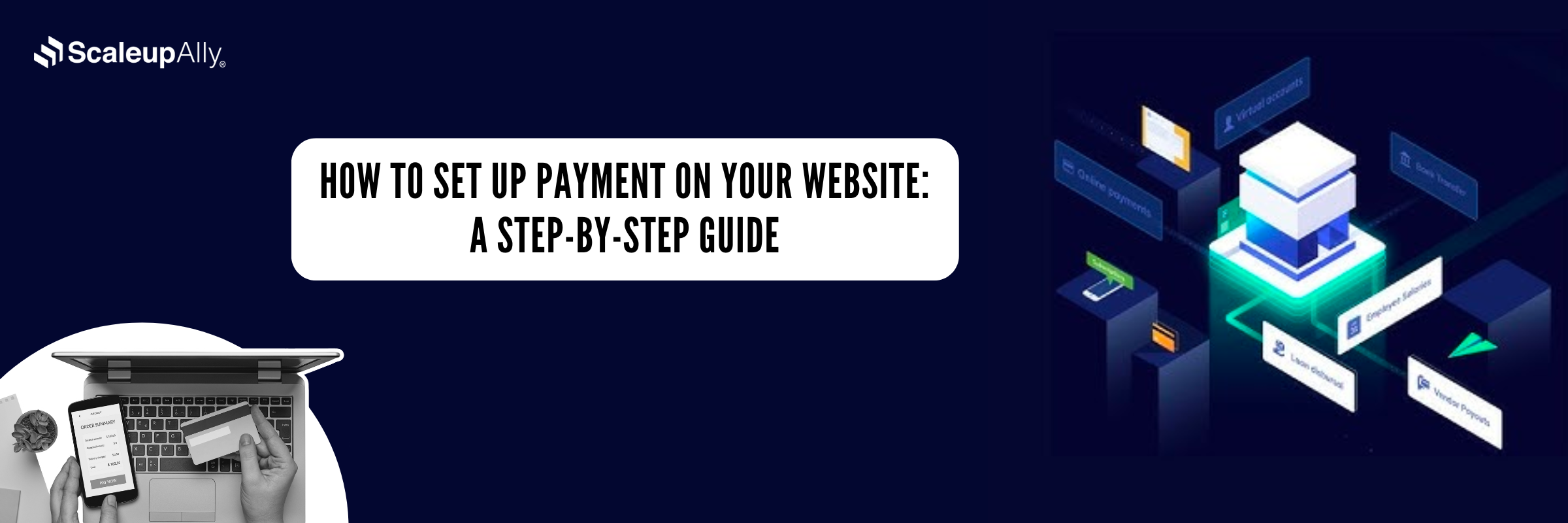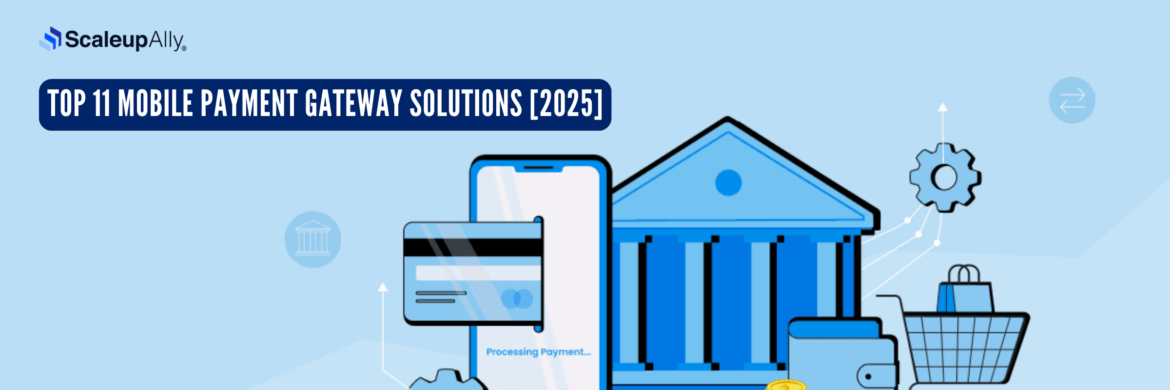
How to Set Up Payment on Your Website: A Step-by-Step Guide
Suprabhat Sen | October 29, 2024 , 12 min read
Table Of Content
Businesses required a safe way to accept online payments when the internet started to expand, and online shopping began to gain popularity. CyberCash was a pioneer in resolving issues related to internet payments. It established the framework for contemporary payment gateways with strong and safe features.
Today, many payment gateways are available for online businesses to integrate into their websites to collect payments. In this blog we offer you a comprehensive guide on setting up payments on your website, along with best practices on how to collect them securely.
Types of Payment Gateways: What You Need to Know Before You Start?
There are four types of payment gateways available primarily. Let us explore each one of them in detail:
1. Hosted Gateways
Third-party service providers provide hosted Gateways. When integrated into your website, payments are usually made on another website. When ready to checkout, customers are redirected to another website where they can enter their payment details.
After the transaction is completed, they are returned to your website. The only disadvantage of this payment gateway is that you do not have control over your customers’ user experience. But on the plus side, security and other compliances are handled for you. It is also easy to integrate.
2. Self-hosted Gateways
The name of this payment gateway gives it away. Unlike the hosted gateway, which is provided by a third party, the website owner codes this gateway into their website. This means that they will need some level of experience in writing code.
If you cannot code, you can hire a developer to integrate it for you. What this also means is that customers will stay on your website when checking out. This gives you total control over the user experience of your customers.
3. API-Based Payment Gateways
API stands for Application Programming Interface. An API is a connection between computers or computer programs. With regard to payment gateways, it allows websites and payment processing services to communicate with each other to facilitate payments.
This is considered one of the flexible payment gateways. You can customize the gateway to match your brand identity or your website. This also requires some technical experience to set up.
4. Local bank integration
As a business, you might want to target specific regions, and it’s important to recognize that payment methods accepted in the United States may differ from those in Canada. In this case, you can utilise local payment options, such as bank transfers.
This payment gateway connects directly to a local bank’s payment system, and its effectiveness largely hinges on the bank’s technology. The more reliable the technology, the smoother your integration will be.
Step-by-Step Guide to Setting Up Payment on Your Website
The steps for setting up payments on websites are usually quite similar irrespective of the gateway you choose. We have outlined a simple guide you can follow through to get started:
1. Choose a Payment Gateway
You need to choose a payment gateway before you can even think of integrating it. An easy way to decide is to assess your business needs against the advantages and disadvantages of each gateway type. While deciding on your pick, we advise you to consider fees associated with each gateway, ease of integration and ease of use for your customers, how secure the gateway is and other features.
Here are a few tips on deciding which payment gateway to use, for example, if you target an international audience, your payment gateway must be able to accept international payments. If you offer subscription-based services, you will need a payment gateway that offers recurring billings. And that is how you decide upon which one works for you.
2. Create a Payment Gateway Account
After choosing your preferred gateway, you must create an account on the payment gateway’s website (if you didn’t choose the “self-hosted gateway” option) before moving on to integration. This process collects basic information to help you set up payments.
While signing up, you will be asked to provide your business information (business name, contact number, address, and banking details). Make sure to give the correct information by double-checking. Try to avoid mistakes during this process. A little error or inaccurate information may lead to problems when you are ready to receive payments.
3. Integrate the Payment Gateway with Your Website
The moment of truth arrives. You will need some coding experience to integrate the payment gateway into your website because you must insert some code snippets or install a plugin. To help make it easier, a step-by-step procedure (documentation) is usually provided on how to integrate.
However, we recommend hiring a developer to handle it properly if you have no coding experience.
4. Configure Payment Settings
Congratulations on adding payment to your website. But the job is not done yet. Setting it up is one thing, and configuring it is another. By configuring, we mean choosing your preferred currency to collect payments, a preferred payment method (be it credit cards, debit cards, digital wallets, etc.), and other transaction processing.
You also need to think about security at this point if you are integrating a self-hosted gateway.
5. Test Your Payment System
It is best to test your payment portal before rolling it out to your customers. If the payment system is not properly configured, you can make those adjustments beforehand. You can also simulate the entire checkout process and observe for any hiccups, such as wrongful debits, payment authorisation, and order confirmation.
6. Collect Payment
Congratulations! Go live with your payment gateway and begin collecting payments from your customers. Enjoy.
7. Refine
It is normal to have little issues with receiving payment after going live. In the first week after the integration, monitor its performance by looking at transaction success rates, average processing times, and any customer feedback you may receive. If you notice any issues, adjust the gateway’s settings.
To improve your website’s conversion rate, we advise that you offer multiple payment options. This will also cater to different customer preferences.
How Much Does It Cost?
There is no one-off figure we can attribute to the cost of setting up a payment gateway. Several factors influence the costs, and let us have a look at some of them below:
1. Payment Gateway Fees
Most of the payment gateways you may encounter will charge a percentage per transaction in addition to a flat fee. For example, the following payment gateways charge in this manner:
- PayPal: 2.9% + $0.30 per transaction (in the US market).
- Stripe: 2.9% + $0.30 per transaction.
- Monthly Fees: Some gateways charge a monthly fee, which could be a flat fee every month or based on your monthly transaction volume. For other services, monthly fees are charged based on the features you may need, including fraud protection or value-added services. Authorize.Net charges a monthly fee, typically from $10 to $25.
- International Fees: Additional fees (usually 1%–2%) may apply if you accept international payments.
2. Merchant Account Fees (if separate)
You will likely pay additional fees if your payment gateway requires a separate merchant account (a bank account that allows businesses to accept and process payments, especially credit card payments).
While some payment gateways, like PayPal and Stripe, provide a bundled solution (gateway + merchant account), others require you to set up a separate merchant account through a bank or third-party provider.
- Setup Fees: $0–$150 (depending on the provider).
- Monthly Fees: Typically $10–$30 per month.
- Additional Transaction Fees: Some merchant accounts add 0.1%–0.3% per transaction.
3. SSL Certificate
SSL certificates secure your website especially when it handles sensitive data like payment information. Some SSLs come Free (if provided by your hosting provider) to $100+ per year for premium certificates with insurance.
4. Integration Costs
If you use Shopify, WordPress (WooCommerce), or other platforms, they often have easy payment gateway integrations that come at no extra cost beyond the platform fee.
Depending on your site, the cost of hiring a developer to integrate the payment gateway manually can range from $500 to $2,000.
5. Security Compliance (PCI-DSS)
Many payment gateways handle PCI-DSS compliance, but if you handle payments directly on your servers, compliance costs can range from US$200-500 annually, depending on your provider and setup.
6. Other Costs
- Chargeback Fees: If a customer disputes a payment, you may incur a chargeback fee, usually US$15–25 per dispute.
- Currency Conversion Fees: When accepting foreign currency, some payment providers charge a conversion fee of 1%–2%.
5 Best Practices for Collecting Payments Online
Setting up a payment gateway is not always enough. Sometimes, you need to follow some guidelines to give your users a good experience and to avoid discrepancies in collecting payments.
Here are some best practices that you must follow in order to ensure convenience and satisfaction for your customers:
1. Offer Multiple Payment Options
There are at least twenty mobile wallets and other payment methods in the USA alone, for example. These methods serve the needs of different demographics. Offering multiple payment options on your website to cater to diverse payment users is a good practice.
The end result is an increase in conversions and reduced cart abandonment. You will also be able to serve a broad user base.
2. Choose a Secure Payment Gateway
A secure payment gateway should help you process transactions and ensure the security of your customers’ sensitive data (credit card details, personal information, etc.). When picking one, look for one with PCI-DSS compliance to guarantee security.
3. Offer Mobile-friendly Payments
Smartphones accounted for about 30% of weekly shoppers globally in 2023. Another interesting statistic is that users spend an average of over 4.5 hours daily on their smartphones, with a significant portion dedicated to shopping activities.
You will be missing capturing mobile shoppers if you do not optimise your website to receive mobile payments. Ensure your checkout process is mobile-friendly by implementing mobile payment solutions like Apple Pay or Google Pay for seamless checkout on mobile devices.
4. Simplify the Checkout Process
A complicated checkout process is one of the leading causes of cart abandonment. Customers will always expect a quick, smooth, and intuitive payment experience whenever they shop. Reducing the number of steps involved is the best experience you can give your customers when checking out conveniently. Also, allow your customers to “guest checkout” instead of forcing them to sign up before checking out.
5. Display Transparent Pricing and Policies
Hidden fees may lead to customers abandoning the checkout if they’re surprised by unexpected costs.
To avoid this, be transparent about any fees, shipping costs, or taxes before customers reach the final payment step. Before they hit the “Check out” button, display the total costs clearly and provide easy access to your refund and return policies.
Seamlessly Set Up Payment Gateways With ScaleupAlly’s Help
A complex checkout experience accounts for a significant cart abandonment rate during checkout. Irrespective of the service or goods you sell, you require a reliable checkout experience to convert shoppers. While setting up a gateway may seem straightforward, it can quickly become complex if you’re not familiar with the technical details. This is where ScaleupAlly can help you.
Your payment process is often the first impression customers have of your business, so it needs to be the best experience. We integrate the right payment methods and meet security standards to ensure your website can process payments securely and efficiently.
We help businesses of all sizes offer hassle-free payment experiences. As long as you have a website and need to collect payment, we are your go-to partner. Let’s discuss setting up a payment gateway for your website today. Contact us, and let’s schedule a call.
Conclusion
As mobile wallets surge in popularity, cash is steadily becoming a thing of the past. The rise of digital payments has transformed the way we transact, and the recent pandemic has only accelerated this shift. In order to adjust to changing consumer tastes, businesses are already using digital solutions.
Offering speedy and secure payment solutions is not only a convenience in today’s fast-paced world; it is a must for both customers and businesses. It is obvious that in order to satisfy our contemporary demands, our payment methods must change as we traverse these shifting times. Embrace the future of finance!
Frequently Asked Questions
Q: How do I create a payment system for my website?
Select a reliable payment gateway that fits your business needs and integrate it into your website using plugins or by coding.
Q: Do I need a developer to set up payment gateways?
While many payment gateways offer user-friendly interfaces and plugins for easy integration, a developer may be needed to customise features and help troubleshoot any technical issues that may arise.
Q: How much do payment gateways cost?
Payment gateways typically charge transaction fees, which can range from 1.5% to 3% per transaction, plus fixed fees per transaction. Some gateways also charge monthly fees or setup fees.
Q: What are the best payment gateways for small businesses?
Some of the best payment gateways for small businesses are PayPal, Square, Stripe, and Authorize.Net.
Related Blogs

15 Best Payment Gateways in the UAE in 2025 [Latest Updated]
Discover the top 15 payment gateway options in the UAE, including features, and pricing plans for businesses seeking secure online transactions.
Suprabhat Sen
Nov 25 ,
13 min read

Top 13 Mobile Payment Gateway Solutions [2025]
Discover the top 13 mobile payment gateways, with key features, pros, cons, and integration tips to help you choose the best solution for your app.
Suprabhat Sen
Nov 8 ,
18 min read

10 Best Ecommerce Payment Gateways in UAE
Explore the best ecommerce payment gateways in UAE. Compare providers, costs, compliance, and features to choose the right solution for your business.
Suprabhat Sen
Sep 30 ,
13 min read



